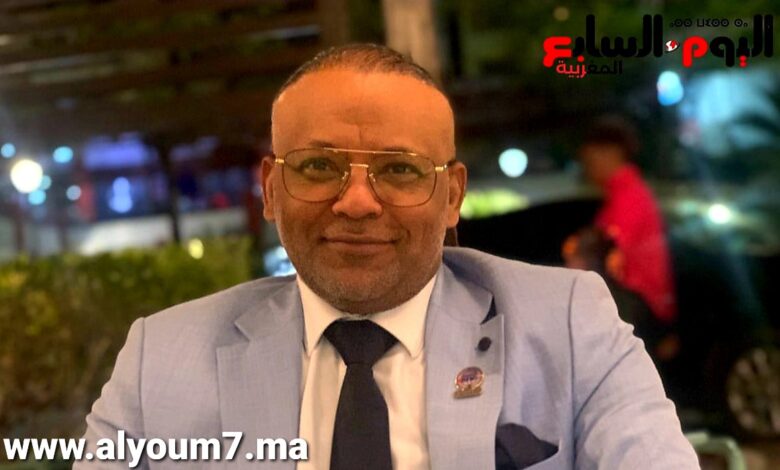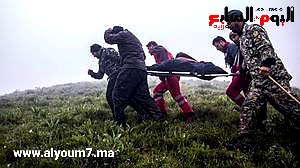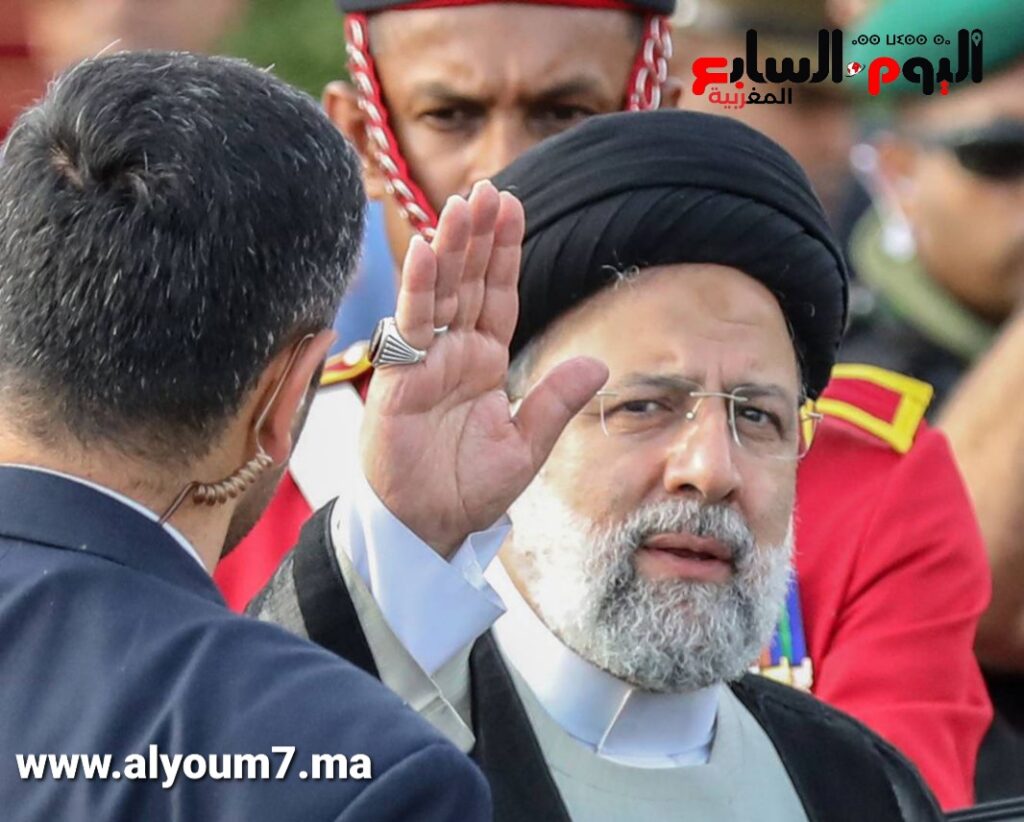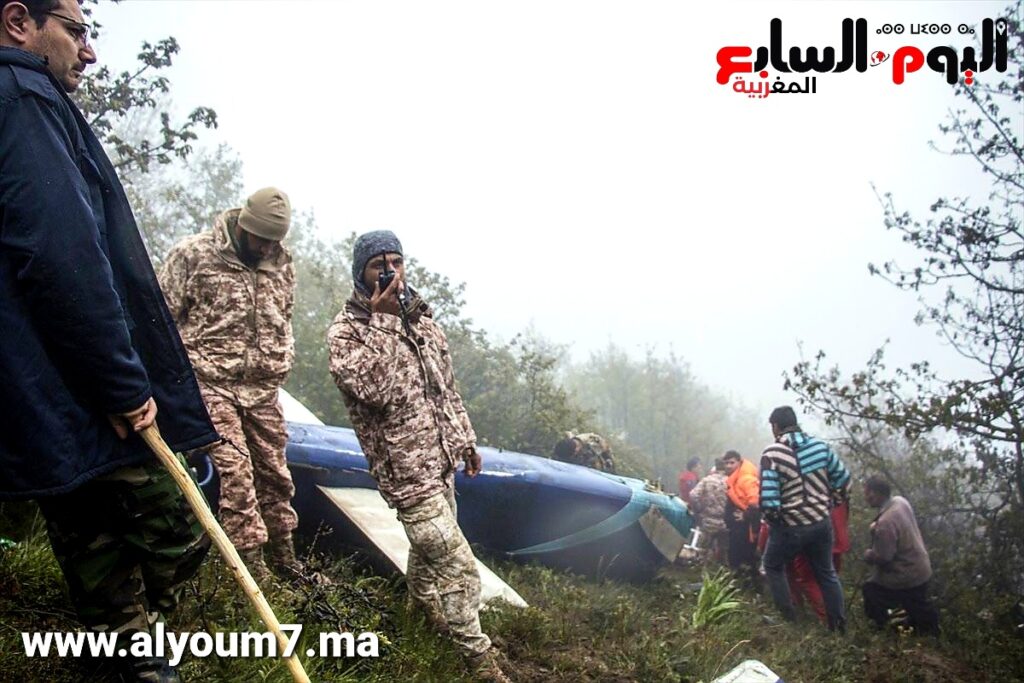Editor-Chefe Dr. Ezzat El-Gammal escreve: “Assim foi a resposta de Israel… O Mossad na maior operação de assassinato contra o presidente iraniano e seu ministro das Relações Exteriores.”

No início, o editor-chefe do jornal marroquino “Al-Youm Al-Sabea” expressa suas mais profundas condolências ao povo iraniano, o eixo de resistência, e especificamente à liderança iraniana e ao Líder Supremo Ayatollah Ali Khamenei, pela perda do Presidente Ebrahim Raisi e do Ministro das Relações Exteriores Hossein Amir-Abdollahian, juntamente com outros cinco companheiros mártires.
O incidente ocorreu dois meses após o Irã lançar seu primeiro ataque direto na história contra Israel, durante o qual disparou mais de 300 mísseis balísticos, de cruzeiro e drones. Isso foi em resposta a um ataque aéreo que destruiu o consulado iraniano em Damasco em 1º de abril, resultando na morte de sete oficiais da Guarda Revolucionária Iraniana, incluindo o comandante sênior Mohammad Reza Zahedi, o comandante dessas forças na Síria e no Líbano, pelo qual Israel foi acusado de realizar.
A resposta inicial de Israel ao sem precedentes ataque direto em seu território foi muito fraca, a ponto de poder ser descrita como uma “resposta simbólica”, já que Israel lançou um ataque com drone em uma base aérea e um local nuclear perto da cidade central de Isfahan.
A localização do incidente levanta suspeitas sobre o envolvimento de Israel na morte de Raisi, já que o helicóptero do presidente iraniano caiu em uma floresta montanhosa perto da fronteira com o Azerbaijão, o menos amigável dos vizinhos do Irã, em parte devido aos seus fortes laços com Israel e sua história de cooperação com o Mossad. A resposta de Israel foi que se a queda do helicóptero foi causada por uma explosão deliberada, provavelmente teria sido devido a uma bomba muito pequena para esconder qualquer evidência, indicando que o incidente foi premeditado.
Observa-se que a aeronave que transportava o presidente iraniano e sua equipe era um Bell-212 fabricado nos EUA pela Bell Textron no Texas, EUA, e voou pela primeira vez em 1968. O Bell-212 opera com dois motores e pode voar com um motor se o outro for danificado. Também pode transportar 15 pessoas, incluindo o piloto, ao mesmo tempo, com uma velocidade de até 190 km/h.

O presidente Raisi era o candidato para suceder o Líder Supremo Ayatollah Ali Khamenei. Ele estava sendo meticulosamente preparado para se tornar o próximo líder do Irã, um papel para o qual era altamente qualificado como descendente do Profeta Muhammad (que a paz esteja com ele). Raisi possuía um nível extraordinário de experiência, tendo ocupado inúmeras posições e desfrutado do apoio de todas as instituições iranianas, incluindo as parlamentares, constitucionais, executivas e espirituais. Ele combinou todas essas qualidades em sua personalidade e avançou significativamente o Irã durante seu mandato. Ele enfrentou a agressão americana, desenvolveu o programa nuclear e aumentou os níveis de enriquecimento apesar das pressões. Além disso, ele fortaleceu as relações econômicas com países vizinhos, estabelecendo um sistema econômico que protege o crescimento econômico do país das opções políticas americanas e aumentou o comércio com Rússia e China.
Sua política de se voltar para o leste culminou na assinatura de acordos estratégicos de longo prazo entre Teerã e tanto Pequim quanto Moscou. Isso também abriu caminho para a adesão a blocos econômicos e uniões em níveis regional e internacional
Indeed, Iran’s full membership in the Shanghai Cooperation Organization, led by China and Russia, and its invitation to join the BRICS group of emerging economies, comprising Brazil, Russia, India, China, and South Africa, underscored the success of Raisi’s policy of pivoting eastward.

Raisi’s efforts to strengthen economic relations with neighboring countries through the establishment of an economic system resistant to American political pressures have led to increased trade with Russia and China, further consolidating Iran’s position in the region.
Iran’s attainment of full membership in the Shanghai Cooperation Organization (SCO), under the leadership of China and Russia, along with the invitation to join the BRICS group of emerging economies, signals Tehran’s strategic move to diversify its international alliances and reduce reliance on Western powers.
Viewed as a gateway to counter Western dominance and balance relations affected by its nuclear program, Iran’s participation in these blocs reflects its desire to assert itself on the global stage and pursue its national interests through multilateral cooperation with non-Western partners.
The main motivation for Iran’s accession to the SCO is the presence of the Eastern power trio (Russia, China, and India) in the organization. These countries have a high status on various political, economic, and military levels globally, which helps mitigate the effects of sanctions imposed on Iran.
The War on Gaza
Iran’s diplomatic stances, which gained media momentum recently due to its rapid activities and intensive political efforts amid the Israeli aggression on the Gaza Strip, cannot be overlooked.
With the onset of aggression in Gaza, the Iranian Foreign Minister embarked on a regional tour, including stops in Baghdad, Beirut, Damascus, and Doha. For the first time, he discussed the potential for what he termed a preemptive action by the “Axis of Resistance” to halt what he described as Israel’s genocidal war on Gaza.
Indeed, the axis mobilized from its various locations in Iraq, Syria, Lebanon, and Yemen, adhering to calculated rules of engagement, to provide support to the Palestinian resistance. However, despite its significance, this effort did not reach the level required to deter Israel or restrain its aggression in the region.
Unprecedented Attack on Israel
In April of last year, Iran executed an unprecedented drone and missile assault on Israel, deploying over 300 drones and missiles for the first time. This strike was a direct response to Israel’s bombing of the Iranian consulate in Damascus, which resulted in the deaths of seven members of the Revolutionary Guards, including two senior officers.

Ebrahim Raisi’s Career
Raisi, a conservative figure who has faced significant criticism for his human rights record, has been accused by human rights organizations of involvement in the execution of thousands of political prisoners in 1988. Before assuming the presidency, Raisi held the highest judicial position in Iran.
Following the Iranian Revolution, Raisi entered the judiciary, serving in various capacities across different cities while receiving mentorship from Khamenei, who later ascended to the presidency in 1981. Raisi commenced his judicial career at a young age, rapidly ascending the ranks to become Tehran’s assistant prosecutor at just 25 years old.
He began his career in the judiciary in 1981, initially serving as a prosecutor in Karaj before taking on additional responsibilities as the prosecutor of Hamedan. In 1985, he assumed the role of deputy prosecutor of Tehran, a position that led to his involvement in the “Death Committee” in 1988.
The “Death Committee,” which conducted clandestine trials, comprised Raisi and three other judges. The exact number of executions resulting from these trials remains unknown, but human rights organizations estimate that around 5,000 individuals, both men and women, were buried in undisclosed mass graves, constituting a grave crime against humanity.
While leaders of the Islamic Republic acknowledge the executions, they avoid delving into the specifics of these sentences and their legal basis. Raisi has consistently denied direct involvement in the executions while justifying them, citing a fatwa issued by the then Supreme Leader, Ayatollah Ruhollah Khomeini.
Following Khomeini’s death in 1989, Raisi was appointed as the prosecutor general of Tehran, a position he retained under the successive tenures of Mohammad Yazdi, Mahmoud Hashemi Shahroudi, and Sadeq Larijani as heads of the judiciary.
Following the death of the first Supreme Leader, Ayatollah Khomeini, in 1989, Raisi assumed the role of prosecutor general of Tehran. He retained this position throughout the tenures of Mohammad Yazdi, Mahmoud Hashemi Shahroudi, and Sadeq Larijani as heads of the judiciary.
From 2004 to 2014, Raisi held the position of first deputy head of the judiciary. In 2006, he was elected as a member of the Assembly of Experts, tasked with appointing or removing the Supreme Leader. Two years later, he was appointed as the deputy chairman of the assembly.
Raisi ascended through the ranks of the judiciary, ultimately becoming the prosecutor general of Tehran and later the prosecutor general of Iran in 2014. He held this position until March 2016 when he assumed leadership of one of Iran’s wealthiest and most significant religious foundations, the Imam Reza Shrine Foundation, also known as Astan Quds Razavi, responsible for overseeing the Imam Reza shrine in Mashhad. This role carries substantial prestige and influence, given the foundation’s vast budget, which amounts to billions of dollars, and its ownership of half the land in Mashhad, Iran’s second-largest city, as well as oil and gas companies and factories.
In 2017, Raisi surprised observers by running for president against Rouhani, who secured a second term with a landslide victory in the first round. Nevertheless, Raisi’s defeat did not halt his political trajectory, as Supreme Leader Khamenei appointed him as the head of the judiciary in 2019.
In 2019, the United States imposed sanctions on Raisi, citing his alleged involvement in human rights violations.

Little is known about Raisi’s personal life, except that his wife, Jamileh, is a professor at Shahid Beheshti University in Tehran, and they have two adult daughters. Raisi’s father-in-law is Ahmad Alamolhoda, a hardline Shiite cleric and preacher in Mashhad.
Since assuming the presidency, Raisi has prioritized foreign policy and relations with neighboring countries. He has also focused on addressing Iran’s economic and social crises, largely attributed to the sanctions imposed on the country. Raisi aims to improve Iran’s economic situation by enhancing economic ties with neighboring nations, establishing a resilient economic system to safeguard against American political pressures, and boosting trade with Russia and China.

